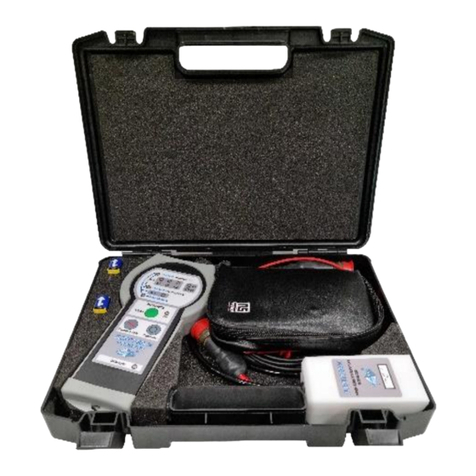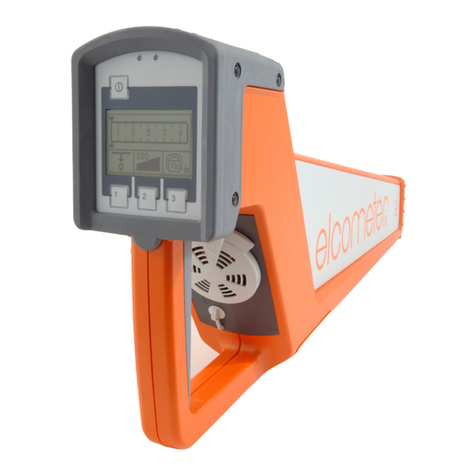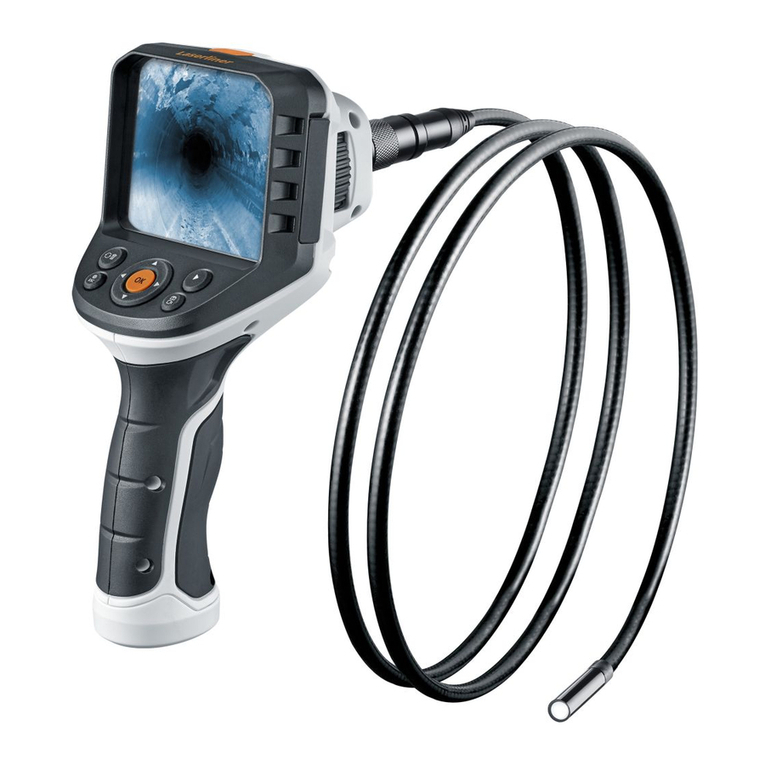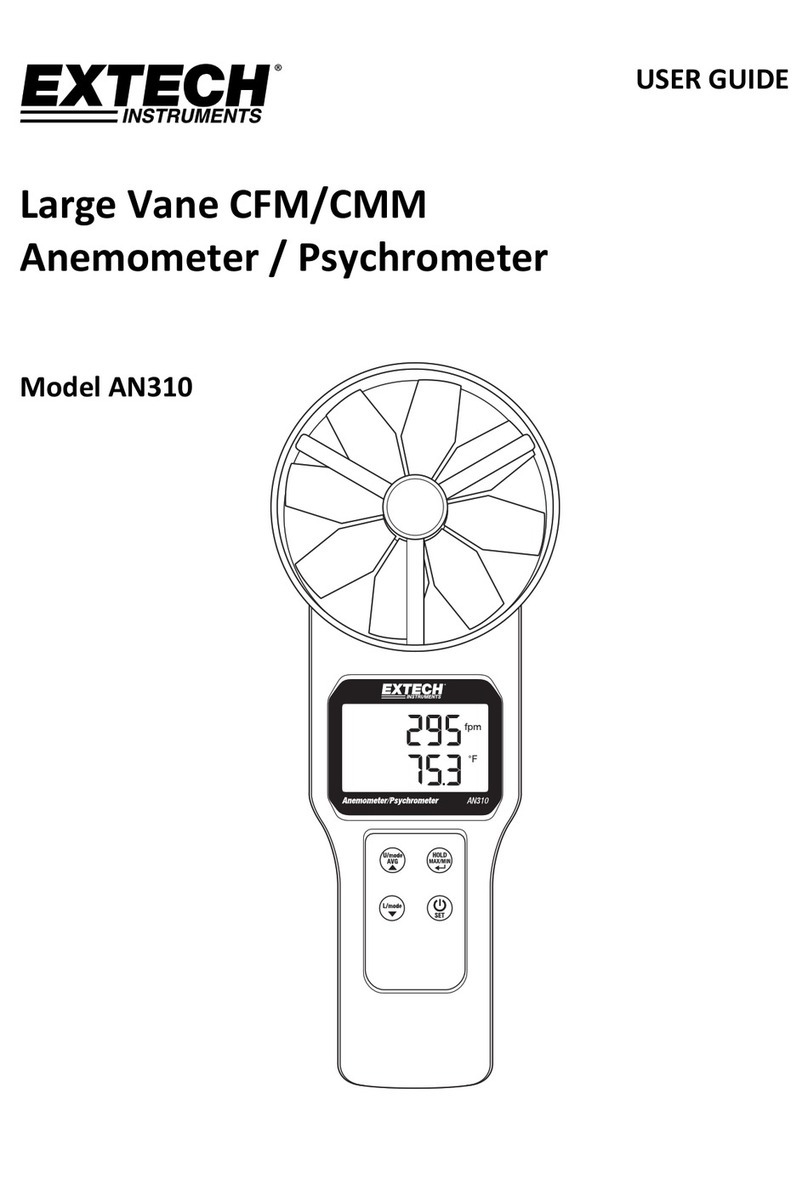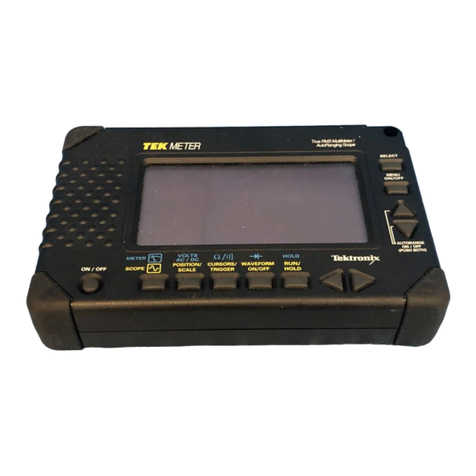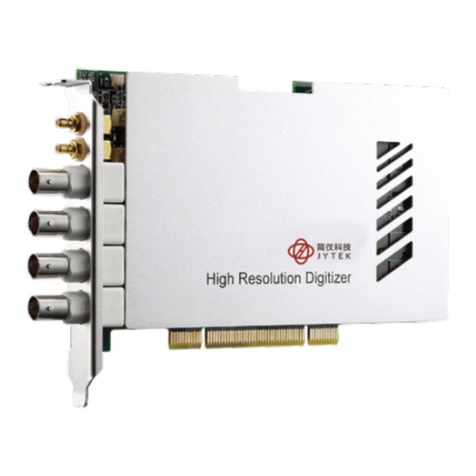Made GasTracker Installation manual

GAS TRACKER
OPERATION MANUAL
March 2011
MADE V1.00

GU_GAS_TRACKER_V_1_00_US 2/18
Table of contents
Table of contents Page 2
Overview Page
The GasTracker™ Page 4
The transmitter Page 5
Procedure for connection of the transmitter Page 6
The receiver Page 8
Procedure for connection of the receiver Page 9
Prelocate mode Page 10
Pin-point mode Page 11
Frequently asked questions Page 16
Technical characteristics of the GasTracker™ Page 1
Warranty Page 18
Copyright Page 18

GU_GAS_TRACKER_V_1_00_US 3/18
Overview
The GasTracker™ is an instrument for tracing and identifying buried plastic gas pipes.
The method used is based on the propagation of a complex acoustic wave. Thanks to the
application-specific sensor and sophisticated signal analysis software, it is able to trace the
position and direction of a buried plastic pipe from the surface, even in noisy urban
environments.
The GasTracker™ is used on pipes operating at low pressure (21 mbar / psi) or at medium
pressure (4 bars / 58 psi). Scientific tests have been validated by GDF at up to 7 bars / 101 psi,
and field tests have been made at a maximum of 11 bars / 160 psi. It can actually even be used in
‘open air’ (atmospheric pressure).
It was developed to provide an easier, more efficient means to locate pipes resulting in a savings
of time and money. Manufactured in France and validated almost one decade ago by the French
group GDF, it is now used on all continents. This unique signal injection method is internationally
patented.
Operating the GasTracker™ typically requires the temporary disconnection of a customer for the
duration of the research.
However, the system can be connected at any convenient point.
The GasTracker™ just needs to access the gas, to vibrate it.

GU_GAS_TRACKER_V_1_00_US 4/18
The GasTracker™
It comes with two robust transport cases: one for the transmitter and one for the receiver.
The transmitter case:
• A carrying case containing the controls
and the internal batteries
• An orange cord to connect the transmitter
to the resonator tank
•A cigar-lighter plug
•An electric main cable
The receiver case:
•A hand-held receiver
•A listening device
•A resonator tank
•A rod
•A charger for the hand-held receiver
If some parts are missing, they can be purchased separately. Do not hesitate to contact your local
GasTracker™ dealer.

GU_GAS_TRACKER_V_1_00_US 5/18
The transmitter
Simple to manipulate, the transmitter sends a vibration through the gas.
In order to do this, a direct access to the gas is required, so you need a point of connection to
the network.
We usually recommend disconnecting a customer’s meter to connect the resonator tank here.
But it can actually be connected anywhere on the network, since you have made the good
adaptor.
Inside the resonator tank, an acoustic membrane will vibrate and create a very special acoustic
signature. This acoustic wave will vibrate every close particle of gas, which will in turn, vibrate
the next particles. This is how the signal is propagated into the network.
There is one simple rule: the bigger the diameter of injection, the greater the distance.
Here is a front view of the transmitter:
•Transmission signal (blinks
when the transmitter is in use)
•Battery level of charge
•Fault indicators
•ON button
•OFF button
•Receiver charger, only for the
old version of the GasTracker™
The GasTracker™ transmitter has two 12Volt (16A/h) internal rechargeable batteries. The
autonomy is about 5 hours on the field (in standard conditions).
In order to completely recharge the batteries, leave the transmitter connected to the electric
main overnight. It will automatically stop once the charge is completed, to avoid damaging the
batteries.
If you intend to store the GasTracker™ for a long period of time, we recommend doing this
with batteries fully charged.

GU_GAS_TRACKER_V_1_00_US 6/18
Procedure for connection of the transmitter
1. Connecting the resonator tank.
-Disconnect a customer’s meter with all the safety procedures required for this operation.
(Or find an access point anywhere on the network).
-Affix the resonator tank to the pipe end thanks to the proper adaptor.
-Check to ensure the purge valve is open (on the resonator tank).
-Slowly open the gas valve and check there are no leaks on the pipe.
- Using the purge valve of the resonator tank, remove the air out of it totally.
(Keep the purge valve open about 5 seconds)
-Close the purge valve on the resonator tank.
-Open your gas valve fully.
Now your system is safely connected to the gas network, and almost ready to be used.
2. Connecting the transmitter and starting it.
-Plug the orange cord from the transmitter to the resonator tank.
-Press the ‘on’ button.
You should now hear the noise of the signal.
ATTENTION: ALWAYS OPEN/CLOSE NETWORK AND PURGE VALVE SLOWYLY TO AVOID
DAMAGING THE MEMBRANE INSIDE THE RESONATOR TANK.
Repeated shocks due to pressure on the membrane may break it.

GU_GAS_TRACKER_V_1_00_US 7/18
Things to know about the transmitter:
For safety reasons, always make sure the joints are gas tight, and there are no leaks.
You may sometimes hear a rattling noise inside the resonator tank. This is normal.
The resonator tank can be plugged in any direction, upside down, horizontally, vertically, etc.
There is no ATEX requirement for the GasTracker™ since it is used outside, in open air.
The vibration is non-destructive for pipe walls and T connections.
Optimal results will be obtained in ‘normal’ environment conditions. Extreme temperatures may
affect the transmission of the signal, because it may affect soil conditions.
The signal is propagated from the pipe to the surface through the soil. As it is a vibration, the
more compact the soil, the better the values you can expect.
Compact soils, like asphalt or concrete, will always give
better results than soft grounds like grass or earth; especially
over longer distances.
The distance covered by the GasTracker™ will mainly depend
on the soil compaction. Field experience has proven that an
‘average’ distance would be about 200 meters (650 feet), in
both directions.
Always try to connect your transmitter close to where you
need to find the pipe: if you need to locate a pipe in a street,
try to connect your resonator tank somewhere in this street,
so you can get higher results in the interesting area.
All around the transmitter, the signal generated will be so powerful you may have difficulties
locating the pipe at the starting point. We recommend moving a few meters, or feet, away from
the transmitter before starting a locate campaign (see next chapter).
. To stop the transmitter
-Switch off the transmitter, and disconnect the orange cord from the resonator tank.
-Close the network valve, and slowly purge the gas out of the resonator tank.
-Unplug the resonator tank.
-Reconnect your customer using all the safety procedures your company requires.

GU_GAS_TRACKER_V_1_00_US 8/18
The receiver
The GasTracker™ receiver is composed of two distinct parts: the listening device, which will listen
to the ground micro-vibrations, and the hand-held receiver that will display the results.
The receiver has two different modes: Prelocate, and Pin-Point.
-Prelocate:
Mode to quickly identify the area where the pipe is located.
-Pin-Point:
Mode to accurately locate and trace the pipe.
Knowing this, the ‘standard’ procedure of utilization of the receiver will be:
First, using the Prelocate mode, you quickly confirm the presence (or absence) of the pipe in a
designated area.
Second, once you know approximately where the gas service/line is, you switch to Pin-Point to
enable you to accurately find good spots, and trace your yellow dots on the ground.
Here is the face view of the receiver:
•ON/OFF buttons
•High visibility screen
•Change the gain
•Go to Prelocate mode
•Go to Pin-point mode / Start a new calculation
The receiver works with a rechargeable battery. Its autonomy is about 8 hours. The charger is
provided. The hand-held receiver supplies the listening device.
Like for the transmitter, we recommend to leave it charged overnight for a complete cycle.

GU_GAS_TRACKER_V_1_00_US 9/18
Procedure for connection of the receiver
Set up the receiver.
-Use the military connectors to plug the hand-held receiver to the listening device.
-Connect the carrying rod to the listening device.
Your receiver is ready to use!
IMPORTANT: The listening device has three long feet, to ‘listen’ to vibrations.
If you are working over a hard surface like
concrete, pavement, asphalt, etc., just put the
listening device on the ground.
If you are working over a soft surface like
grass or earth, we recommend pushing with
your foot the listening device in the ground.
Push until you reach hard enough soil.
Things to know about the gain:
The gain is the sensitivity of the receiver. When you switch it on, the default value is ‘Gain 1’.
Gain 1 is used when you are still close to the transmitter, and the signal is strong enough.
As distance increases, the signal will slowly decrease. Once the signal is too low, you will switch
to ‘Gain 10’ to have a better sensitivity, and you will better ‘hear’ the signal.
IMPORTANT: Depending on the soil compaction, it is sometimes necessary to immediately
switch to gain 10, even few meter, or feet, away from the transmitter. It is all about compaction
of the ground.

GU_GAS_TRACKER_V_1_00_US 10/18
Prelocate mode
Use Prelocate mode to quickly identify the area where the pipe is located.
-Press the ‘on’ button.
-Press ‘Prelocate’ button.
-Put the listening device where the pipe is supposed to be (or where you think it is)
-Wait two seconds.
-Read the bars on the screen in real time.
Results will appear as a bargraph:
Left: a little bit of signal Right: a lot of signal
For both: check that the bars remain constant
If you are over the pipe, there will be a lot of bars across the screen. If you do not see any bars,
the pipe is certainly somewhere else.
In this mode, your results will be slightly impacted by the ambient noise. If you stomp on the
floor, you will see a lot of bars on your screen, BUT these bars will disappear to zero a few
seconds later.
This is why, in Prelocate mode, you are looking for constant bars.
Constant bar = Constant vibration = Constant signal sent by the transmitter.
Example: If you have to locate the pipe in a street, always check with Prelocate mode the entire
street in perpendicular to cover the entire surface, from one sidewalk to the other. If you do
this, you should find a place where you have a lot of signal: your pipe is there.

GU_GAS_TRACKER_V_1_00_US 11/18
Pin-Point mode
In Pin-Point mode, you will identify the exact location of the pipe.
-Press ‘Pin-Point’ button (if you were in Prelocate mode).
-Wait about 12 seconds.
-Read the value on the screen.
Results will be displayed as percentages. Note that the receiver also displays the history of the
last five values calculated.
You are not looking for 100% of signal. You are looking for the highest value measurable.
Here ‘Pin-Point x1’ means Pin-Point mode in Gain 1.
The level of signal is 95% at this position; and the previous values were 95%, 91%, 9 %, 95% and
9 %.
It seems like the signal is very powerful at this location. In this situation we would recommend
you move a few feet away from the transmitter to be able to have more distinctive values.
ATTENTION: All results under 20% are too low to be coming from the pipe.
These low values are of no interest to you.
Results from 20% to 40% are considered mediocre.
Results from 40% to 70% are considered good.
Results from 70% to 99% are excellent.

GU_GAS_TRACKER_V_1_00_US 12/18
If you look at the illustration below, you can see that over an undefined distance, the higher
value can be 81%, then can drop a little bit to 47% (due to a less compact soil), and then raises
again to 92%, because the ground is back to normal compaction.
s seen above, the methodology of locating and tracing the gas pipe.
Then dots after dots, you will be able to trace a buried network with very good accuracy.
If you need to dig somewhere, do not take only one value, but at least three, so you can have a
central point and a direction. If you make an average line of these three dots, you are exactly at
the top of the pipe. See the illustration above.
Optional use of the GasTracker™: Identifying a pipe in an open trench.
If you have an open trench with several pipes, you can put the listening device on each pipe and
press ‘Pin-point’ button. You will obtain some signal only on one of these pipes; the one on
which the transmitter is connected.

GU_GAS_TRACKER_V_1_00_US 13/18
Things to know about the signal:
With distance, the signal will slowly decrease to a point where the values will be too low to be
good (between 20 and 0%). At this time, you have to switch to ‘Gain 10’; it will immediately
give you a better reading of the signal to continue the localization campaign.
Once you arrive to low values in Gain 10, it is time to disconnect your transmitter, and connect it
somewhere else farther along on the network.
The signal is supposed to decrease slowly, if it drops very quickly (like 88% to % at only one
meter, or three feet ahead) it can only mean three things:
-The pipe switches to metal (you cannot find metal pipes with the GasTracker™)
Solution: None. Metal does not vibrate. By the way, if the metal pipe section is
short, and if it goes back to plastic a few meters/feet ahead, you will certainly find
your signal over there.
-The pipe goes in a conduit (the signal is no longer sent through the ground)
Solution: None. The air between the top of the plastic pipe and the top of the
conduit cuts the signal. It is not propagated in the soil anymore.
-The pipe ends here (or makes a curve)
Solution: Go back to the latest known signal, and make a circle around it to check
if there is a curve in the pipe direction (see below). If not, it may signify the pipe is
stopped.
Compare what is comparable
Never compare two signals that are NOT on the same kind of soil, because their compaction will
certainly be different!
Example:
-78% over asphalt is better than 42% over the same asphalt
-52% over grass is better than 1% in the same garden
-BUT 42% over grass MAY BE better than 55% over asphalt BECAUSE of the difference in
soil compaction …
If the grass was as compact as asphalt, the result may have been 88% instead of the 42%.

GU_GAS_TRACKER_V_1_00_US 14/18
In general, when you lose your signal, we recommend you proceed as follows:
-First go a few meters/feet ahead. The soil may not be compact enough around there.
-Then, if you still have no signal, go back to the latest known signal, and make a circle
around it to check if there is not a curve in the pipe direction
On this illustration, you lose your signal. It drops to %. You want to move a little bit farther away
to check if the ground is better two meters / six feet ahead. If you are reading 2%, you can
assume that the pipe is not going in this direction.
After coming back to the last known location, and making a circle, you can usually determine
that there was a curve in the pipe direction!

GU_GAS_TRACKER_V_1_00_US 15/18
If you have some signal, the pipe is here. The reason is simple: it is almost impossible to create a
false signal.
If you do want to prove that last statement, try this test:
-Do not start the transmitter.
-Start the receiver.
-Launch a Pin-Point calculation.
-Stomp on the ground, jump, start the engine of your car, make as much noise as possible
-With all these parasite noises, the highest value you may obtain would be around 20%.
The conclusion is simple : if you have 88%, 6 %, 42% and even 31% … it means you are
listening to the transmitter’s signal; and it also means that your pipe is here … very close.
Limits of utilization of the GasTracker™.
Like any other device, the GasTracker™ has some limits. It will not work in 100% of the cases.
Nothing does.
Usually, our customer experience says that:
-A beginner operator will find 60- 0% of the pipes he will be looking for.
-An expert locating operator will find 90-95% of the pipes he will search.
Customer testimonials can be found on our website, videos on YouTube®, and MADE® remains
accessible if you require any additional information about our product.
For more info, visit www.made-sa.com

GU_GAS_TRACKER_V_1_00_US 16/18
Frequently asked questions
Q. How accurate is it? Can we dig on it?
A. Very accurate and yes, you can dig. When you are in Pin-Pointing mode, you are going to focus
on the highest level of signal on the ground. By doing this at several points, you will trace
an ’average line’, that will be the closest to your pipe (not to say just above).
Q. Is the GasTracker™ the only tool I need to locate gas pipes?
A. No. The GasTracker™ is one tool in your tool box, but this is the only one you will need to find
plastic gas pipes ... For instance, it compliments radar technologies that have difficulty on
clay but is a perfect condition for the GasTracker™.
Q. Does it work on sheath pipes?
A. No. You need a compact soil to transmit your signal to the surface. If your service is in a
conduit, you will lose the signal quickly. But you will be able to trace it from the main for a
short distance (at least you will know where the connection main/service is). It will not
trace metal pipe.
Q. Are there any possible safety issues working with the transmitter close to a gas meter box?
A. No. Our Transmitter has been designed to work safely near a meter box.
Q. Do you need to disconnect the customer’s meter?
A. Yes, the Resonator attaches to the service at the meter connection. But a location &
pinpointing campaign can be really quick.
Q. Is it weatherproof?
A. Yes, the GasTracker™ is IP65; it can be used in rainy conditions.
Q. How far can I locate from the Resonator?
A. Depending on soil compaction, you can locate up-wards to 500 meters (1,500 feet) in both
directions.
Q. May the signal be propagated to another pipe?
A. No. We use an acoustic wave that vibrates just the gas connected to the Resonator.
Q. What is the maximum gas pressure to use it?
A. It works at normal pressure range of plastic gas pipe networks, so up to approximately 7 bars
(100psi). Field tests were done at higher pressure but results are not guaranteed. We
recommend that you not use it above 11 bars (165 psi).

GU_GAS_TRACKER_V_1_00_US 17/18
Technical characteristics of the GasTracker™
•Total weight: approx. 57 lbs. / 26 kg.
Transmitter: approx. 28 lbs. / 1 kg.
Receiver: approx. 28 lbs. / 1 kg.
•Dimensions:
Transmitter: approx.470 x 70 x 190 mm.
Receiver: approx. 550 x 70 x 2 0 mm.
•Transmitter supply:
Internal Batteries.
Autonomy: About 5 hours in normal use.
From vehicle cigar lighter or battery: ∼ A/12 V =
•Receiver supply:
Internal Battery.
Autonomy: About 8 hours in normal use.
• marked
•Standards applied:
-EN 61 000-6-
-EN 61 000-6-1
•Transmitter protection (cover closed but not locked) : IP 5
•Receiver protection : IP 65

GU_GAS_TRACKER_V_1_00_US 18/18
Warranty
The GasTracker™ is warrantied against any default during a period of one year from first delivery
date. If any default happens within this period, MADE will repair or change the broken part free
of charge excluding transport costs. Any repair done under warranty agreement will be
warrantied under initial warranty period.
Limitations:
Our warranty does not include:
Damage on safety seal
Any damage created by natural disasters, force majeure, strikes, wars, terrorism, social
conflicts, or government jurisdiction acts.
Damages due to an abusive utilization, negligence, accident or improper utilization.
Damages provoked by a repair, or a repair attempt not authorized by MADE.
Damages done if the GasTracker™ is not used following instructions from MADE.
Transport costs to the repair center, and back to the customer office.
This warranty is our finale declaration, complete and exclusive.
MADE cannot be held responsible, on any juridical aspect, of any damage, incident, consecutive
to an abnormal utilization, or a negligence by the user.
Copyright
The content of this document is purely informative. It can be modified without notice and
cannot be considered as a commitment by MADE.
MADE declines all responsibility about mistakes or inexactitudes this document may contain.
© MADE. All rights reserved.
No part of this work may be reproduced and distributed without
MADE prior written permission.
Table of contents
Other Made Measuring Instrument manuals
Popular Measuring Instrument manuals by other brands
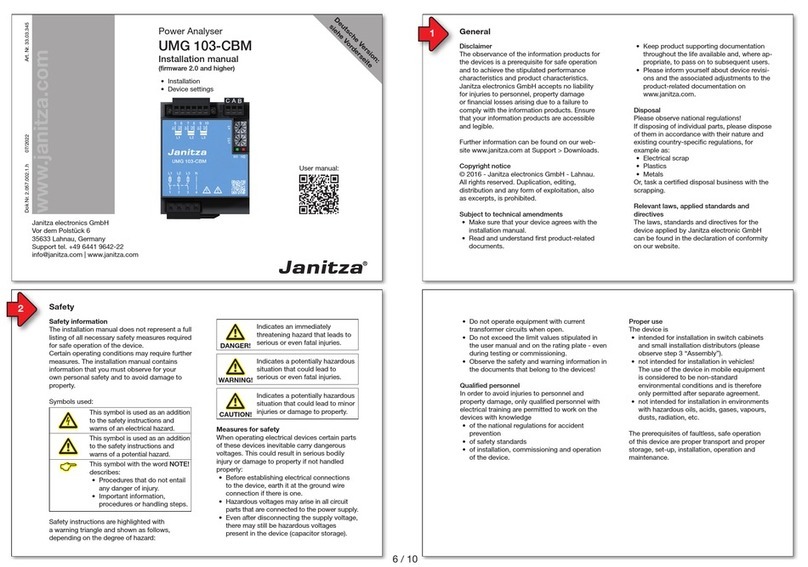
janitza
janitza UMG 103-CBM installation manual
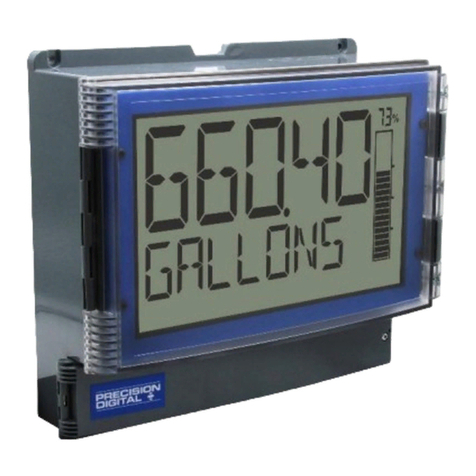
Precision Digital Corporation
Precision Digital Corporation Loop Leader+ Series instruction manual
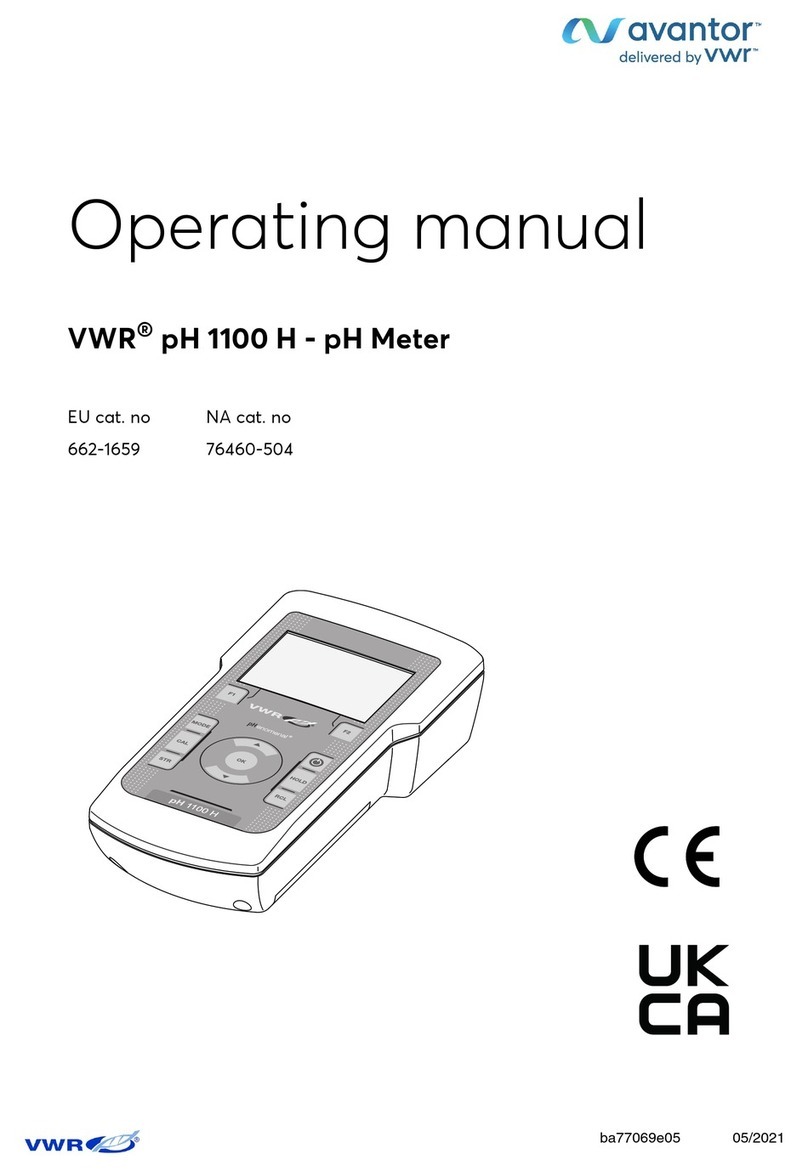
VWR
VWR pH 1100 H operating manual
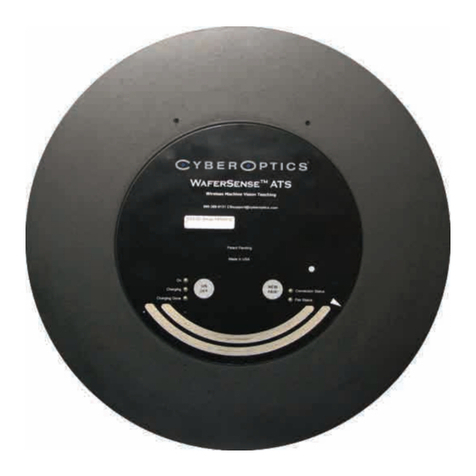
CyberOptics
CyberOptics Auto Teaching System ATS quick start guide
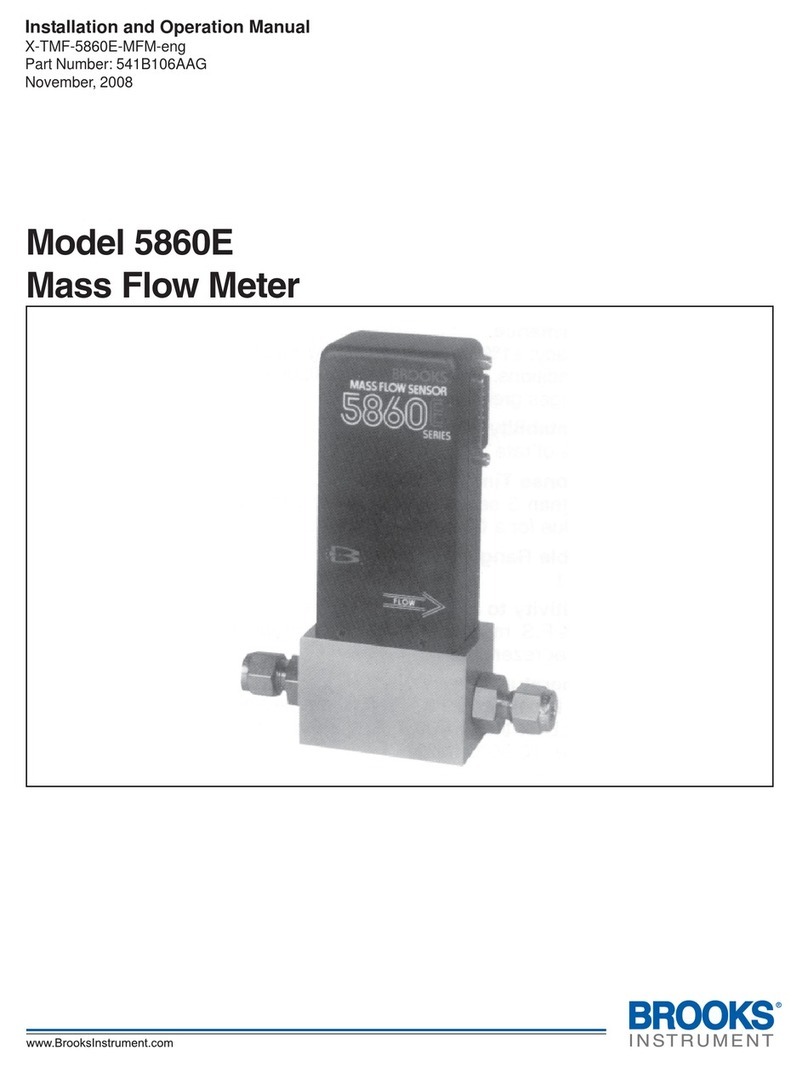
Brooks Instrument
Brooks Instrument 5860E Installation and operation manual
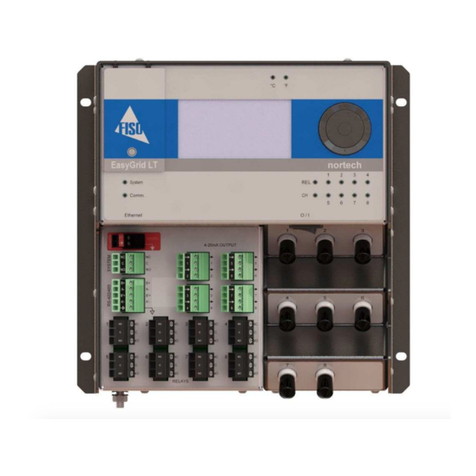
Fiso
Fiso Nortech EasyGrid LT user guide
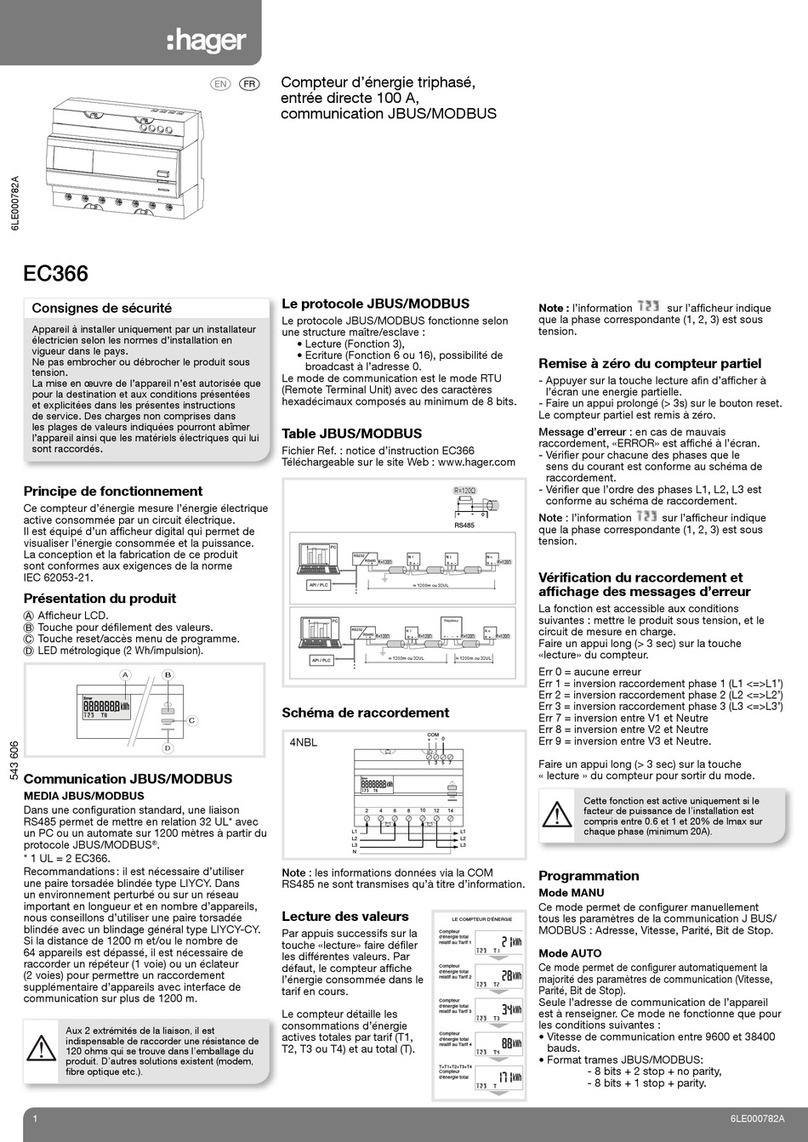
hager
hager EC366 quick start guide
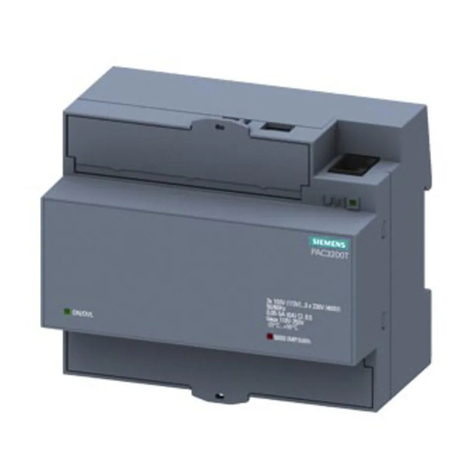
Siemens
Siemens SENTRON PAC3200T product manual
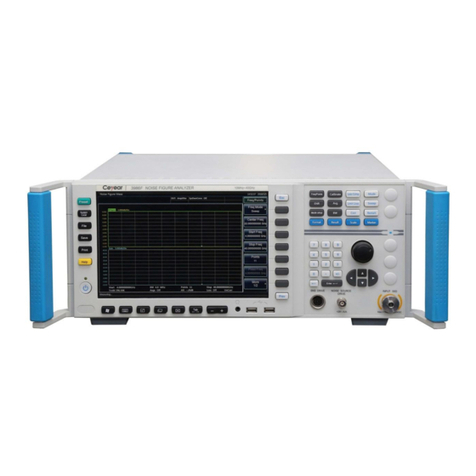
Ceyear
Ceyear 3986 Series Programming manual
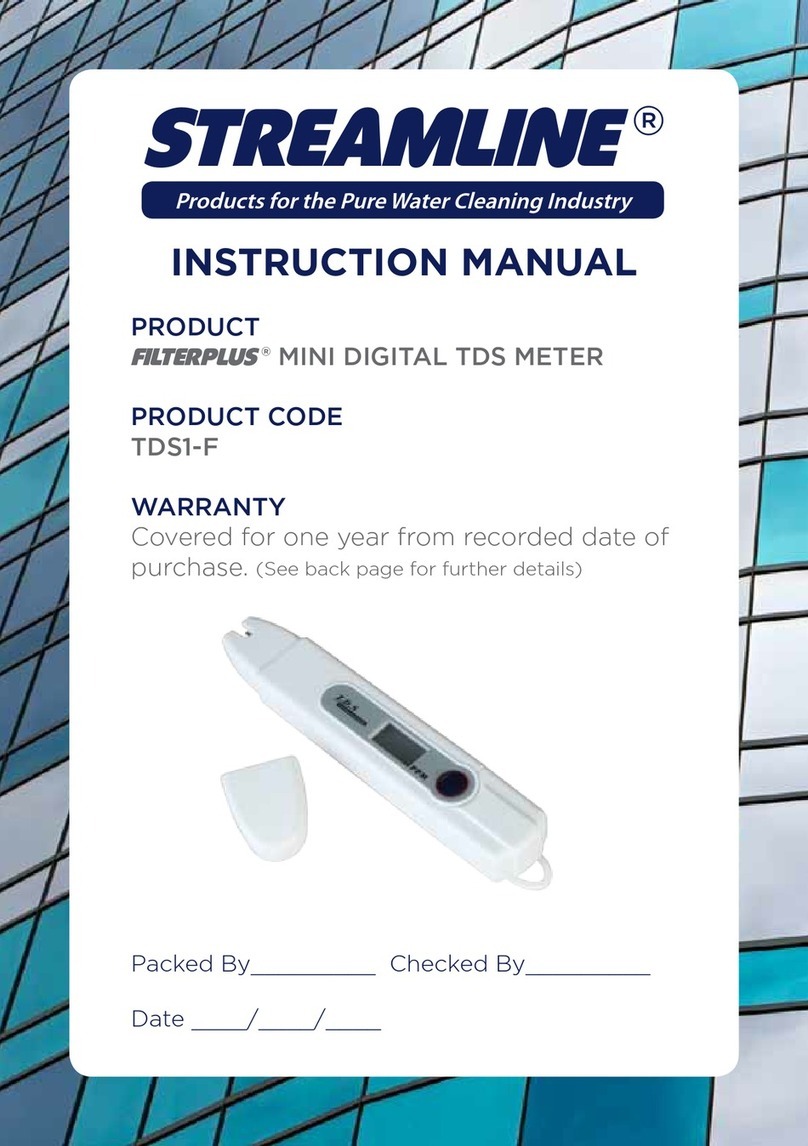
Streamline
Streamline FILTERPLUS TDS1-F instruction manual

Kusam-meco
Kusam-meco KM 907 Operation manual
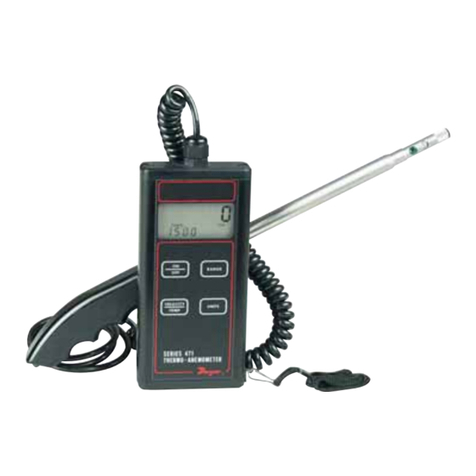
Dwyer Instruments
Dwyer Instruments 471-2 Installation and operating instructions
